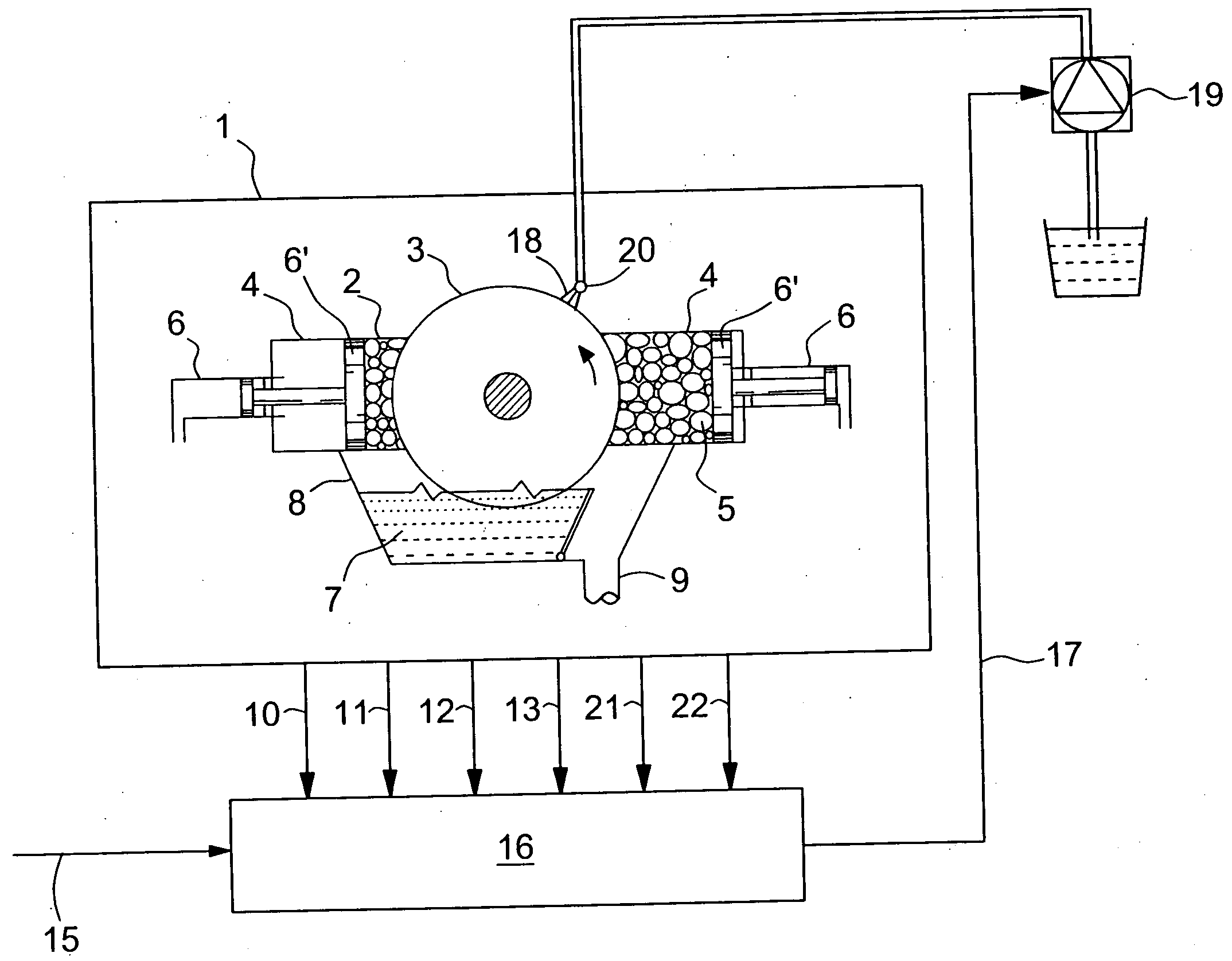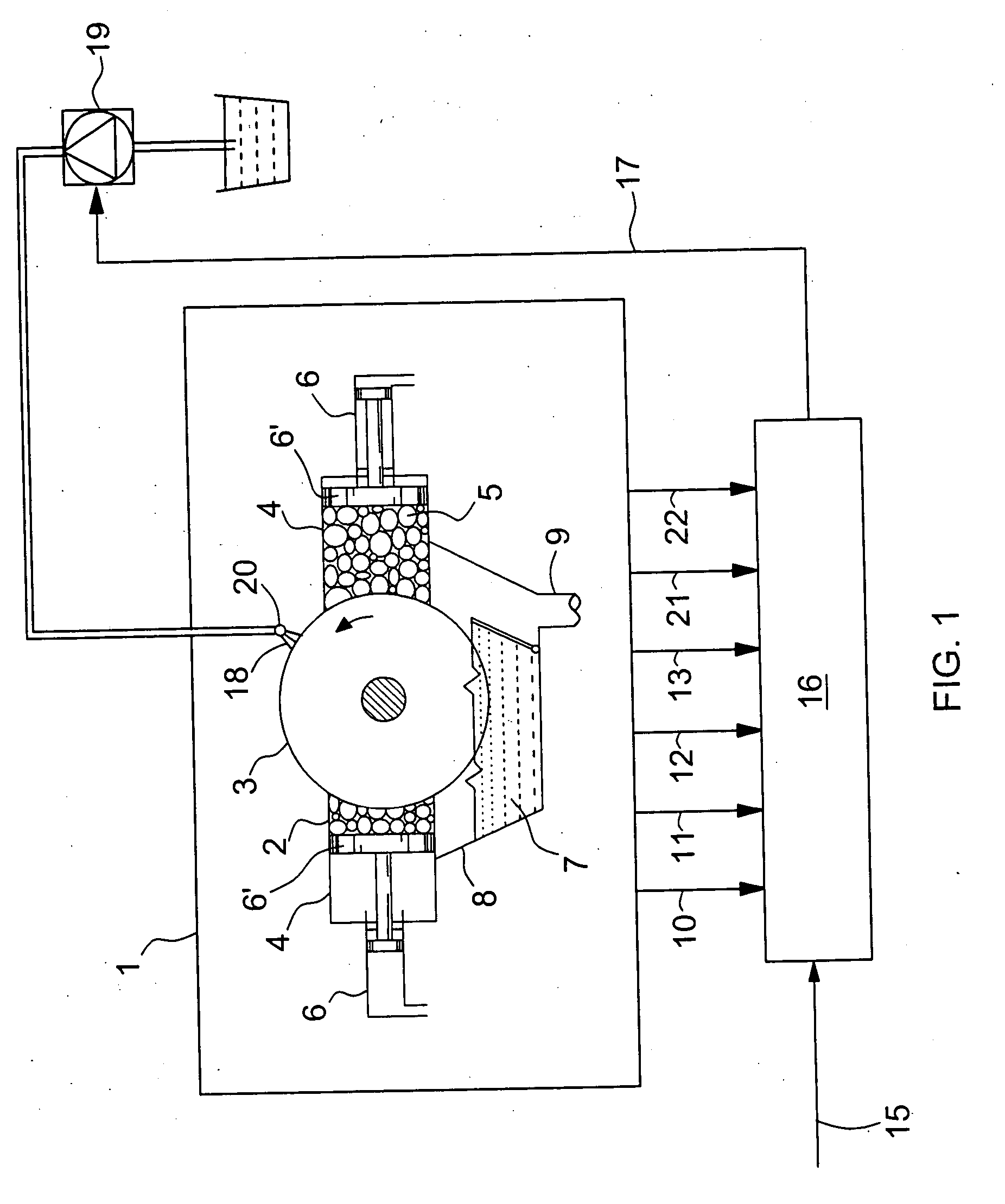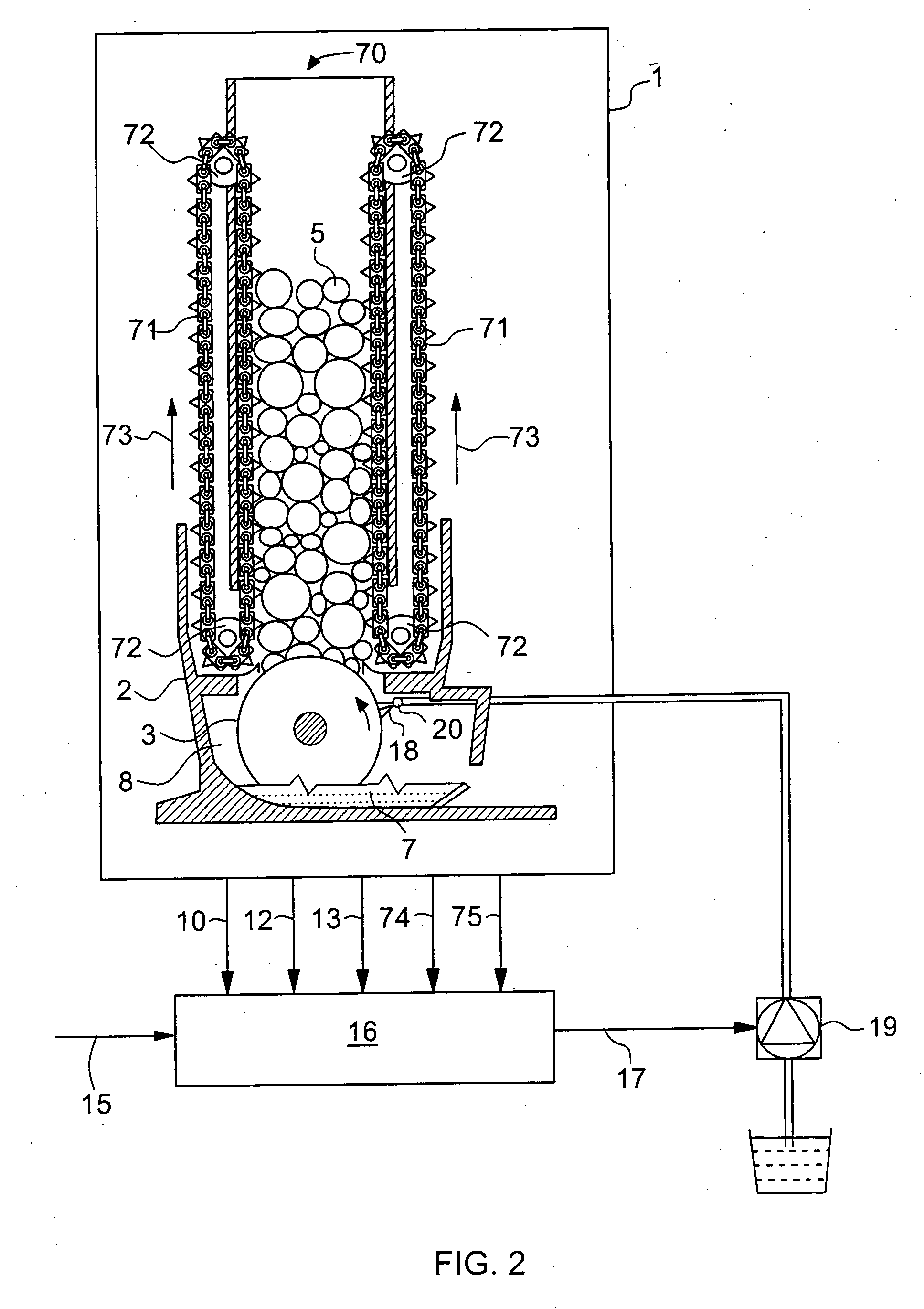Arrangement for treating pulpstone surface
- Summary
- Abstract
- Description
- Claims
- Application Information
AI Technical Summary
Benefits of technology
Problems solved by technology
Method used
Image
Examples
Embodiment Construction
[0027]FIG. 1 shows a two-pocket, piston-loaded pulp grinder 1 comprising a body 2 and a pulpstone 3 mounted rotatably with bearings to the body 2 and having two grinding pockets 4A and 4B, on opposing sides thereof. On the pulpstone 3, there is typically an actual grinding surface, which is currently formed of grinding segments made of ceramics or a ceramics mixture or the like, that grinds the wood into fibers. In the pulp grinder 1, wood 5 is pressed against the pulpstone 3 by compression pistons 6 and pressure shoes 6′ connected to them, producing fiber pulp 7 as water is, at the same time, sprayed to the grinding zone in a conventional manner. Though not shown in the figures, above or at the side of each pocket 4, a feed pocket is arranged for the wood batch to be fed into the pocket. Below the pulpstone 3, there is a tray 8 for the ground fiber pulp 7, and a discharge pipe 9 leads from the tray 8 to a further site of use. Different variables, such as production speed 10, the pr...
PUM
| Property | Measurement | Unit |
|---|---|---|
| Pressure | aaaaa | aaaaa |
| Speed | aaaaa | aaaaa |
Abstract
Description
Claims
Application Information
 Login to View More
Login to View More - R&D
- Intellectual Property
- Life Sciences
- Materials
- Tech Scout
- Unparalleled Data Quality
- Higher Quality Content
- 60% Fewer Hallucinations
Browse by: Latest US Patents, China's latest patents, Technical Efficacy Thesaurus, Application Domain, Technology Topic, Popular Technical Reports.
© 2025 PatSnap. All rights reserved.Legal|Privacy policy|Modern Slavery Act Transparency Statement|Sitemap|About US| Contact US: help@patsnap.com



